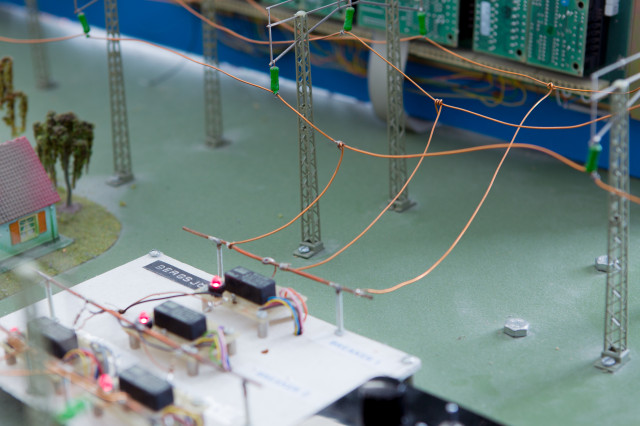Modulation of power converters plays a crucial role in modern power electronics there both low losses that dynamic requirements, harmonics and electromagnetic interference (EMI) are of great importance.
EJ2311 Modulation of Power Electronic Converters 6.0 credits

Information per course offering
Information for Spring 2025 Start 14 Jan 2025 programme students
- Course location
KTH Campus
- Duration
- 14 Jan 2025 - 16 Mar 2025
- Periods
- P3 (6.0 hp)
- Pace of study
50%
- Application code
60293
- Form of study
Normal Daytime
- Language of instruction
English
- Course memo
- Course memo is not published
- Number of places
Places are not limited
- Target group
Open for all master programmes as long as it can be included in your programme.
- Planned modular schedule
- [object Object]
- Schedule
- Schedule is not published
Contact
Staffan Norrga
Course syllabus as PDF
Please note: all information from the Course syllabus is available on this page in an accessible format.
Course syllabus EJ2311 (Autumn 2022–)Content and learning outcomes
Course contents
Intended learning outcomes
After passing the course, the student shall be able to
- apply Fourier series developments to analyse arbitrary periodic signals in the frequency level
- calculate all electric units in linear time-invariant (LTI) symmetric three-phase system when these are current supplied by periodic three-phase sources (asymmetric sinusoidal and symmetric non sinusoidal)
- apply waveform symmetries to identify harmonics in periodic signals
- calculate common key ratios to quantify the harmonic distortion of periodic signals specific THD (”the total harmonic distortion”)
- design carrier wave based pulse width modulators for single- and multi-phase voltage-source converters (with or without sampling)
- explain the effect of phase-shift of the carrier wave and the reference on the harmonic components that result from pulse-width modulation (PWM) in phase and line units
- describe different types of zero vector placements in three-phase carrier wave based PWM
- explain the function of a simple space vector modulator and explain the analogies with carrier wave based modulators
- decide appropriate sets of eliminated harmonics at selective harmonic elimination for different applications and calculate equivalent switching angles
- explain the qualitative differences between carrier wave based and programmed PWM with regard to harmonic and dynamic properties
- conceptually design and simulate simple control systems for direct torque including derivation of the connection table
- draw timetables over the most common multi-level converter topologies and explain their function
- describe effect on harmonic spectra to increase the number of levels in the waveform
- describe the synthesis of different types of carrier wave based multi-level waveforms
in order to obtain a solid understanding of modern synthesis and analytical methods for modulation for voltage-source converters
Literature and preparations
Specific prerequisites
Recommended prerequisites
EJ2200 Electrical machines and drives and EJ2300 Power Electronics.
Equipment
Literature
Examination and completion
If the course is discontinued, students may request to be examined during the following two academic years.
Grading scale
Examination
- LAB1 - Laboratory Work, 1.0 credits, grading scale: P, F
- PRO1 - Project, 1.5 credits, grading scale: P, F
- PRO2 - Project, 1.5 credits, grading scale: P, F
- TEN1 - Written examination, 2.0 credits, grading scale: P, F
Based on recommendation from KTH’s coordinator for disabilities, the examiner will decide how to adapt an examination for students with documented disability.
The examiner may apply another examination format when re-examining individual students.
Other requirements for final grade
Written assignments and written examination
Opportunity to complete the requirements via supplementary examination
Opportunity to raise an approved grade via renewed examination
Examiner
Ethical approach
- All members of a group are responsible for the group's work.
- In any assessment, every student shall honestly disclose any help received and sources used.
- In an oral assessment, every student shall be able to present and answer questions about the entire assignment and solution.
Further information
Course room in Canvas
Offered by
Main field of study
Education cycle
Add-on studies
Contact
Supplementary information
In this course, the EECS code of honor applies, see: http://www.kth.se/en/eecs/utbildning/hederskodex.